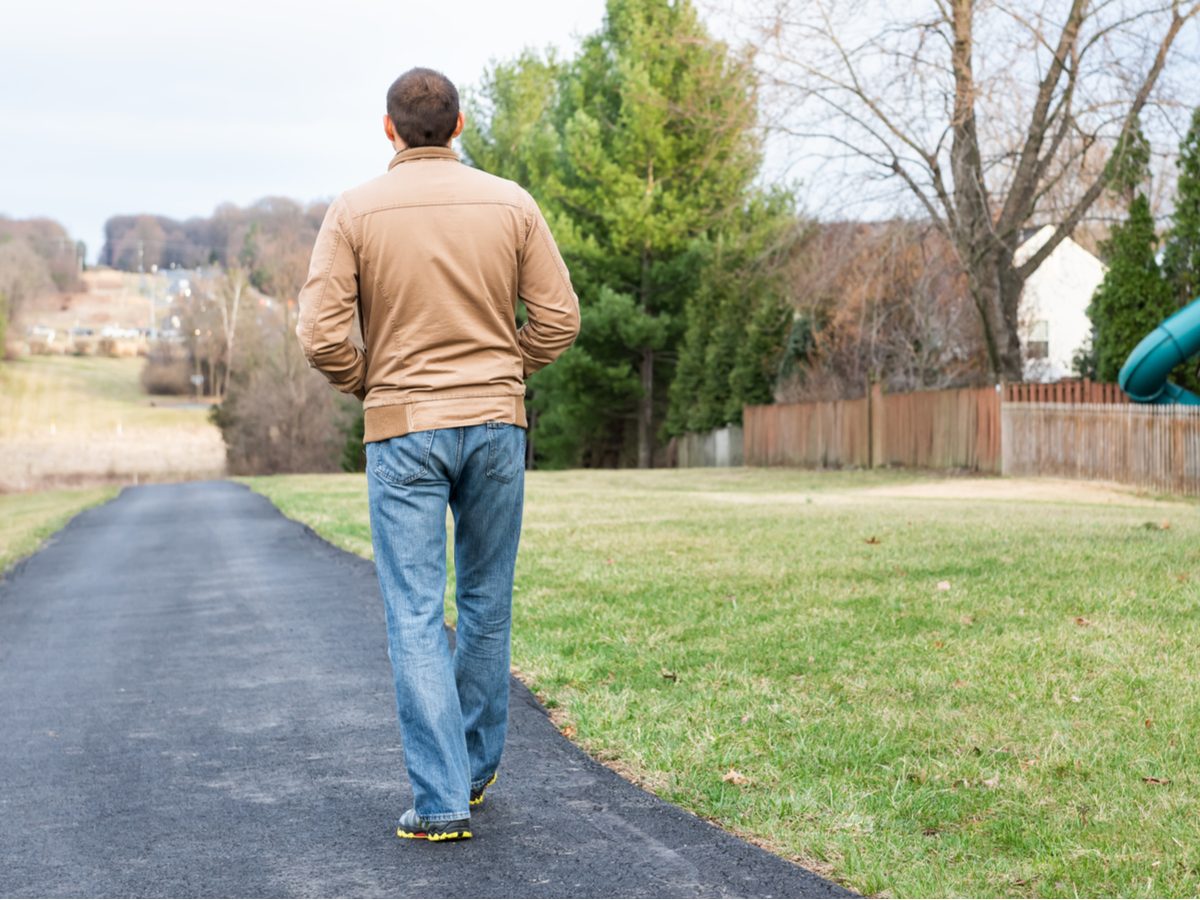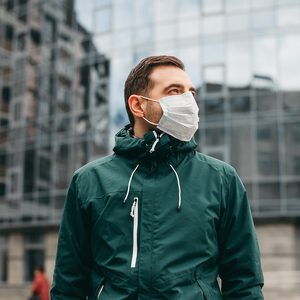Exactly How Dangerous Is It to Take a Walk Outside During COVID-19?
Canadian germ expert Jason Tetro on how to stay safe from coronavirus when taking a walk or going for a run.

Ask An Expert: How Can I Stay Safe Outside During COVID-19?
Reader’s Digest Canada: We know the virus is airborne to some extent, but how easily can infection spread that way? Is it okay to take a walk around my neighbourhood? Or even just sit on my porch?
Germ expert Jason Tetro: This virus spreads primarily through droplets, which are relatively large amounts of fluid that are expelled from your mouth when you cough or sneeze. But also, when you’re coughing, sneezing or breathing hard like when you’re working out, you expel aerosolized droplets, which are smaller.
The majority of the risk is being infected from the larger droplets, which occur within just over half a metre of an infected person. From that distance to two metres there is still some risk but not as much. Beyond two metres, the risk goes down significantly because everything but the smaller aerosolized droplets will have fallen. Those smaller droplets are not as much of an issue because the amount of virus in them is so low that you would have to be constantly exposed to them to be infected.
So as long as you’re appropriately distancing from other people, it’s safe to take a walk or sit in front of your house.
So exactly how much of the virus do I have to be exposed to in order to get sick?
What you’re talking about is called the minimal infective dose. While we don’t know exactly what it is for this virus, for other respiratory viruses it’s usually around 1,000 virions—the term for each individual particle of virus—accumulated over one or several exposures. If you happen to be immunocompromised, that number goes down significantly.
Most of the time, the aerosols that are let off when you exercise would have about a dozen virions in them, or fewer.
So if I live in a building, I don’t need to be worried about it travelling through vents then, right?
The only time that would be a concern is if there’s a person who is on some kind of mechanical ventilator and it’s continually letting off aerosols into the HVAC system of the building. The odds of that happening in a residential building are very low, and even if it was happening, there’s also a very low chance the aerosols generated would lead to an infection of a person in another apartment.
We’ve covered walks, but what if I’m going for a jog and I hear a runner in front of me cough?
Run in the other direction. When people exercise, they’re increasing their breath, and expelling more volume. When you exercise, you produce more mucus—so even just breathing will produce more droplets. If you cough, the amount is going to be really high.
Also, if you’re running, the increased distance you’re covering means you should be a good five metres away from another jogger in order to be absolutely sure you don’t run into their cough.
Even if you’re walking, or just standing on the sidewalk, if a person walking by looks like they’re coughing, the best thing to do is turn your face away and walk in the other direction.
I’ve sometimes held my breath when passing people. Does that help?
Yes, that’s a good idea. If you close your mouth and you’re not breathing, nothing’s getting in there. If the virus gets on you, it would get trapped inside your sweat droplets or get caught up in the hairs inside your nose, which will prevent it from infecting you. Of course, the best thing is to have some kind of barrier—a scarf, a neck tube or a face mask.
Next, we ask: is it safe to have food delivered to my home during COVID-19?
Jason Tetro is host of the Super Awesome Science Show podcast, and author of The Germ Files.






